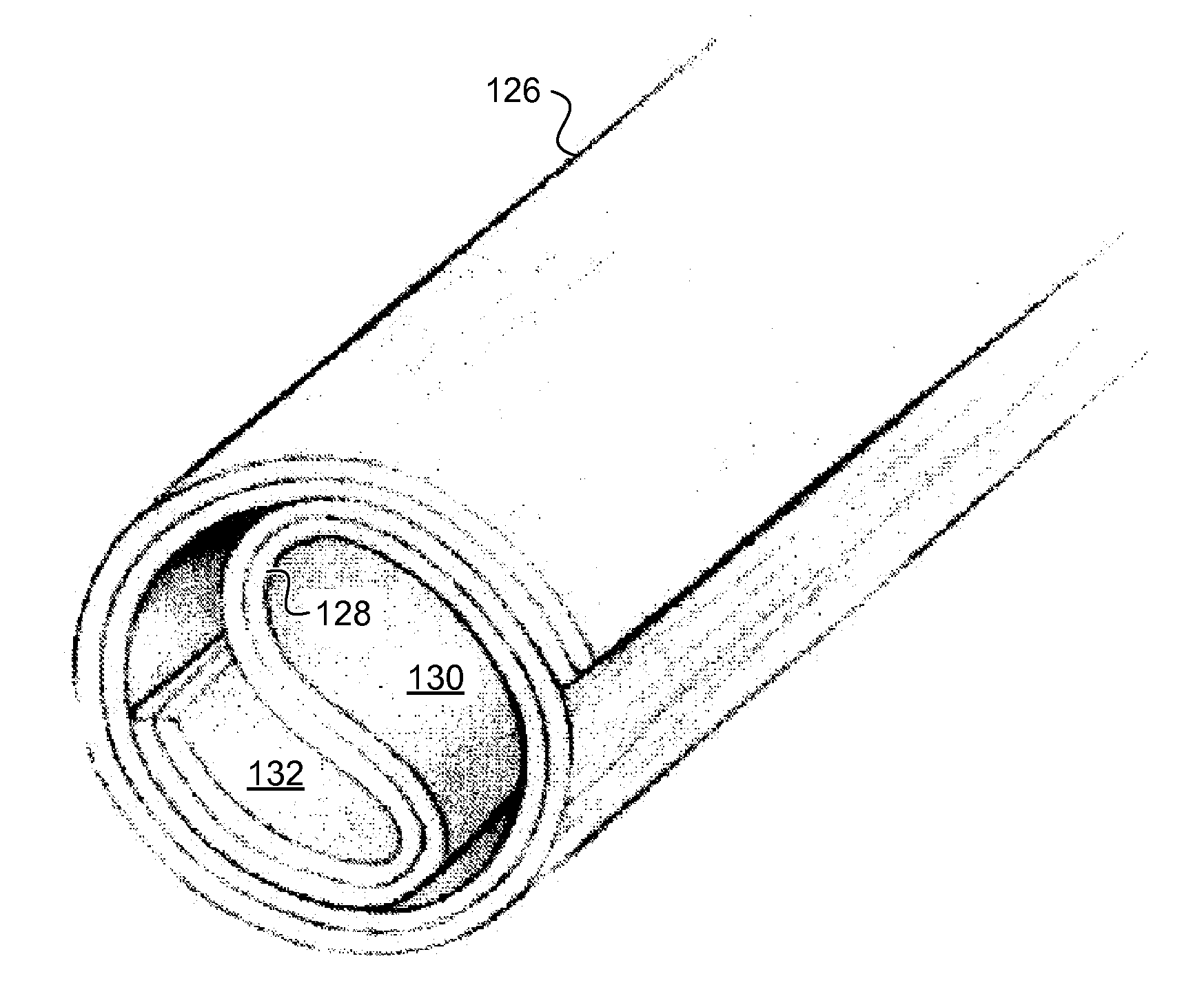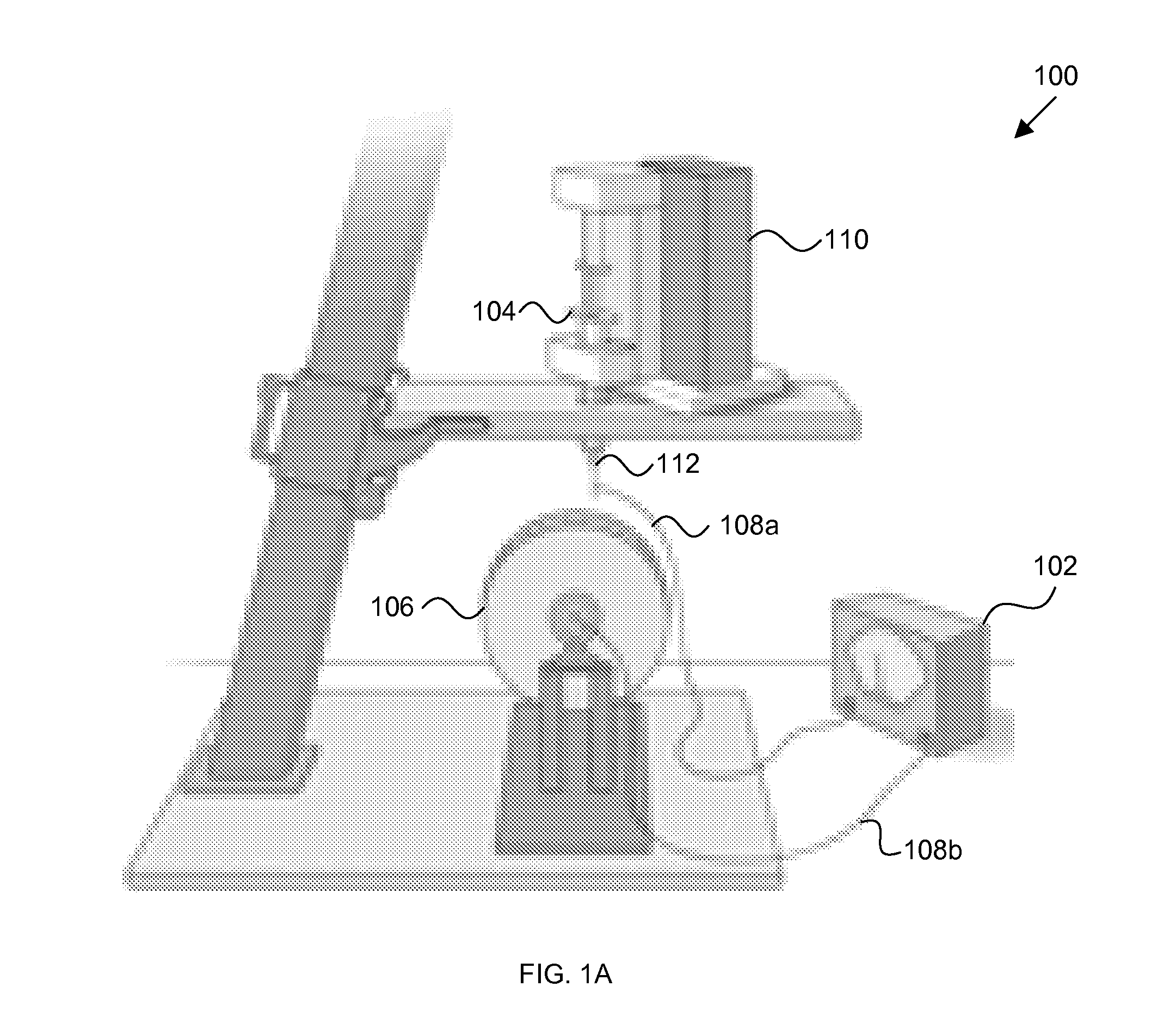Three-dimensional scaffolds, methods for fabricating the same, and methods of treating a peripheral nerve or spinal cord injury
a three-dimensional scaffold and scaffolding technology, applied in the field of three-dimensional scaffolds, can solve the problems of limited treatment of spinal cord injury, regeneration failure, and failure of axons to regenerate spontaneously, and achieve the effects of long distance regeneration, robustness, and extensive axonal regeneration
- Summary
- Abstract
- Description
- Claims
- Application Information
AI Technical Summary
Benefits of technology
Problems solved by technology
Method used
Image
Examples
example 1
Aligned Microfibers Foster Efficient Dorsal Root Ganglia Neurite Growth
[0114]Polymer microfiber substrates were fabricated by electrospinning an 8% PLA solution onto 20 μm thin PLA films (FIG. 1) (Wang et al., 2009). Randomly oriented fibers were deposited on films by electrospinning PLA onto a stationary target; a rotating target was used to make aligned fiber substrates as described in our previous work (Wang et al., 2006). Fiber diameter and alignment were analyzed from scanning electron micrographs (FIGS. 2D and 2E and FIGS. 3A and 3C). Fiber diameter ranged between 1.2 and 1.6 μm. Only 4% of random fibers were found to fall within ±4° C. of the median fiber orientation (FIG. 3B), whereas 97.3% of aligned fibers fell within ±4° of the median orientation (FIG. 3D).
[0115]Dorsal root ganglia (DRG) isolated from P4 rat pups were cultured on film, random, and aligned fiber substrates for 5 days in serum free media (n=6). DRG cultured on film and random fiber substrates projected neur...
example 2
Microtopography Supports Host Tissue Integration and Gap Closure
[0116]Guidance conduits were fabricated from film, random, and aligned fiber 2D substrates rolled into conduits (FIGS. 1C-1F and FIG. 3H). Importantly, conduit fabrication did not perturb fiber alignment. 93.3% of fibers fell within ±4° C. of the median orientation post-fabrication (FIG. 3F). An unambiguous, complete transection model of rat spinal cord injury was used to test the hypothesis that aligned microfibers promote axonal regeneration after CNS injury (FIG. 13). A 3 mm gap was created in the spinal cord (thoracic 9) of adult rats, and immediately after, film, random, or aligned fiber conduits filled with a fibrin gel were grafted into the gap (FIG. 4). Animals from each group were perfused 1 (n=3), 2 (n=3), and 4 weeks (n=7) following injury / implantation. The results from the 4 week time point were gathered in two independent experiments of n=3 and n=4 for each group.
example 3
Aligned Fibers Promote Robust, Long Distance Axonal Regeneration
[0119]Horizontal sections were immunolabeled for neurofilament (RT97) and serotonin (5HT) to examine axonal regeneration after complete spinal cord transection. Neurofilament section overviews demonstrated robust rostrocaudal axonal regeneration into aligned fiber conduits. One week after implantation, all groups displayed a similar pattern of RT97 staining (FIGS. 8A-8C). However, by 2 weeks neurofilament staining demonstrated robust rostrocaudal growth into aligned fiber conduits (FIG. 8F) that further elongated by 4 weeks (FIG. 8I). This response was observed exclusively from the rostral spinal cord. In random fiber conduits, individual RT97+ axons entered the grafts at 2 weeks (FIG. 8E), and a modest rostrocaudal response was observed by 4 weeks (FIG. 8H). In film conduits, very few axons were present at the interface at 2 weeks (FIG. 8D), and at 4 weeks sparse RT97+ axons were seen inside thin tissue strands (FIG. 8...
PUM
| Property | Measurement | Unit |
|---|---|---|
| Length | aaaaa | aaaaa |
| Length | aaaaa | aaaaa |
| Fraction | aaaaa | aaaaa |
Abstract
Description
Claims
Application Information
 Login to View More
Login to View More - R&D
- Intellectual Property
- Life Sciences
- Materials
- Tech Scout
- Unparalleled Data Quality
- Higher Quality Content
- 60% Fewer Hallucinations
Browse by: Latest US Patents, China's latest patents, Technical Efficacy Thesaurus, Application Domain, Technology Topic, Popular Technical Reports.
© 2025 PatSnap. All rights reserved.Legal|Privacy policy|Modern Slavery Act Transparency Statement|Sitemap|About US| Contact US: help@patsnap.com



